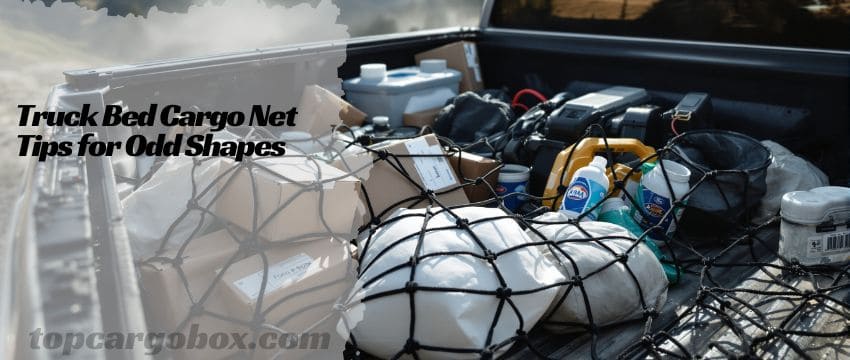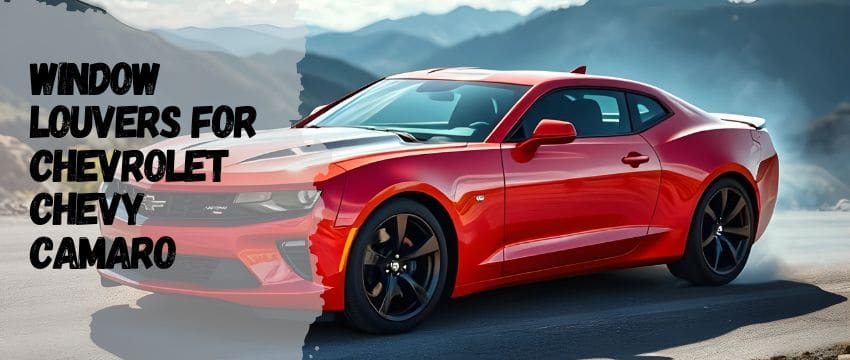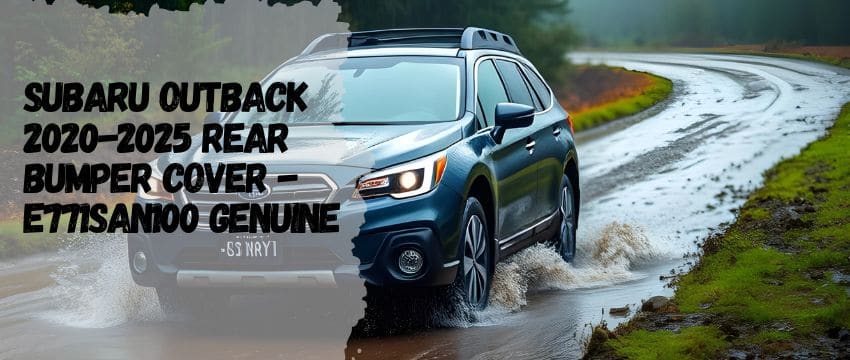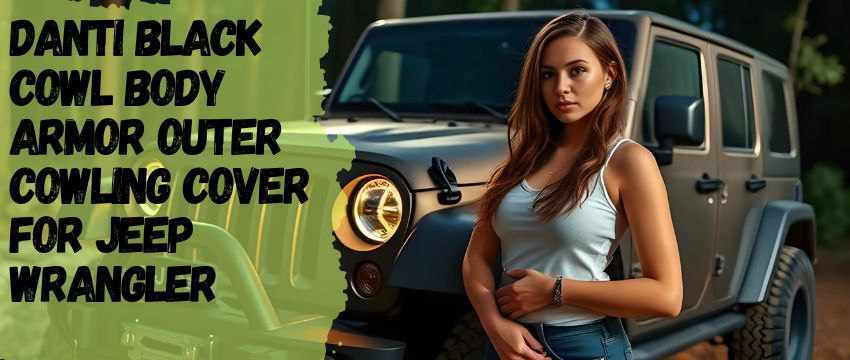Hello, friend, How’s it going? Let’s be real for a second. You’ve probably been there. You’re staring into your truck bed, looking at a pile of stuff that looks like a 3D jigsaw puzzle made by a toddler. There’s a rolled-up area rug, a couple of awkwardly long 2x4s, some potted plants, and a big, floppy bag of sports equipment. You think to yourself, “How on earth am I supposed to get this all to my destination without leaving a trail of my belongings down the highway?” It’s a legit headache, and just hoping for the best is a total long shot. Securing irregularly shaped items in your truck bed doesn’t have to be a white-knuckle experience. With the right approach and a few key pieces of gear, you can transform that chaotic load into a secure, stable, and safe cargo arrangement. I get it, you just want to get your stuff from point A to point B without any “oh snap!” moments. Let’s dive into how you can make that happen, making you the master of your truck bed domain.
Understanding the Chaos: Why Odd Shapes are a Problem
Alright, let’s break down exactly why that pile of weirdly shaped stuff is such a pain. It’s not just you; physics is literally working against you. Regular, boxy items are awesome because they sit flat, they stack nicely, and they have predictable surfaces for you to tie down. Irregular items, on the other hand, are the troublemakers. They have curves, they have points, they roll, they shift, and they create gaps that other things can slide into. When you start driving, you’re introducing a whole circus of forces into your truck bed: acceleration, braking, and cornering. Every time you press the gas, your cargo wants to slide toward the tailgate. Every time you hit the brakes, it all tries to become a passenger in your cab. And taking a corner? Forget it, that’s when everything decides to shift to one side. This isn’t just about convenience; it’s a major safety issue for you and everyone else on the road. A flying piece of lumber or a bouncing cooler is no joke.
What’s the absolute worst-case scenario? Well, off the top of my head, you could damage your items, scratch up your truck bed, or cause a serious accident. But even on a less dramatic level, the constant shifting and bouncing during transit can grind down, scrape, or break your precious cargo. That antique wooden chair you’re moving? Its finish is getting destroyed. Those bags of mulch? They’re tearing open. It totally sucks. So, the goal here isn’t just to prevent things from flying out; it’s to immobilize the entire load, creating a single, stable unit that moves with your truck, not inside it. Think of it like you’re tucking your cargo in for a safe and smooth ride. Getting this right means you can drive with confidence, not a constant, nervous eye on your rearview mirror.
Your Secret Weapon: The Versatile Cargo Net
Now, let’s talk about a game-changer for this whole situation. You might be thinking about ropes and bungee cords, and hey, they have their place. But for a tangled mess of odd shapes, a high-quality, elastic cargo net is often your best friend. I’m talking about something like the AUTOWN Stretchable Cargo Net. This isn’t some flimsy piece of gear; it’s designed specifically for this grunt work. Imagine a net that starts at a manageable 4 feet by 4 feet but can stretch all the way out to 7 feet by 7 feet. That’s a huge range, meaning it can cover a small pile of tools or a massive, overflowing load of camping gear. The flat shape and serious elasticity mean it can conform to whatever weird contours your cargo has, pressing down and holding things in place without needing a perfect, flat surface to grab onto.
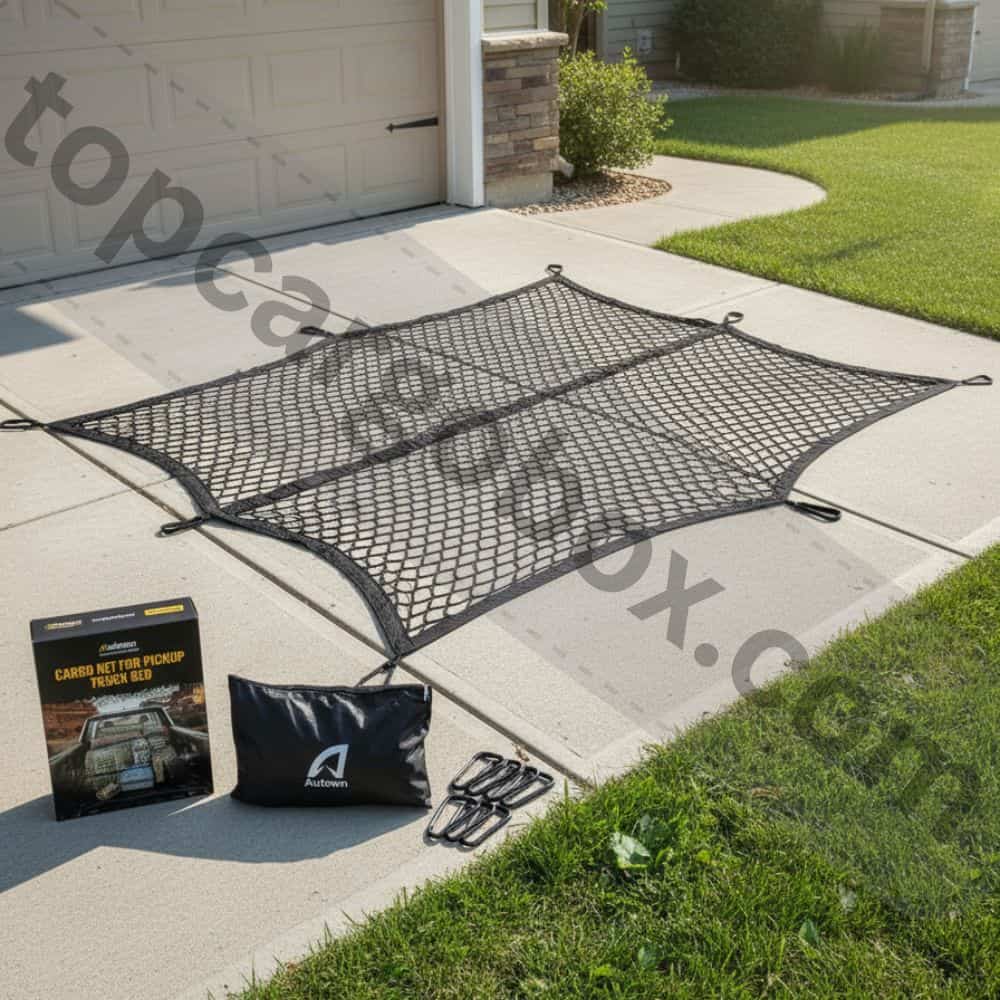
The magic is in the design. A fine 1-inch by 1-inch mesh is a total hero because it doesn’t let small items poke through. You know how with a big-holed net, a shovel handle or a kid’s toy just finds a way to escape? That’s not happening here. And then you have the eight robust metal carabiners. These aren’t flimsy little hooks; they’re climbing-grade buckles that snap securely onto your truck’s tie-down points. This combination of a wide, elastic, fine-mesh net and strong, reliable attachment points creates a system of gentle but firm pressure that holds everything down. It’s like a giant, super-strong hair net for your truck bed, and it makes securing a mixed load so much easier than trying to weave a spider web of individual straps. For real, it simplifies the entire process.
Competitor:

SENYAZON
Detail
You know how it is when you’re just trying to haul a few light things in your truck bed, maybe some pool noodles for the kids or a couple of grocery bags, and you’re stuck doing the old-school grunt work of tying everything down with a confusing web of ropes? What if there was a smarter way to handle those daily, lighter hauls without all the fuss? This super stretchy cargo net is basically your new best friend for exactly that; it starts at a compact 4 feet by 4 feet but pulls all the way out to a generous 7 feet by 7 feet to snugly cover your load. It’s made from tough nylon and comes with a solid 8 metal carabiners that are way better than flimsy plastic hooks, so you can just clip it onto your truck, van, or even your ATV and know your stuff isn’t going anywhere. Forget the struggle of tightening a dozen separate knots—this net’s built-in elasticity does all the work for you, applying just the right amount of pressure to keep those pool toys, stuffed animals, or bags of mulch from bouncing around. How’s that for making your life easier? It’s legit the no-hassle solution for anyone who wants to get on the road quickly, and it even makes for a surprisingly thoughtful gift for your dad or a buddy who’s always on an adventure.

TIRETEK
Detail
Tired of that grunt work trying to secure a massive, overflowing load in your truck bed, where regular straps just don’t cut it and you’re left hoping for the best? What if you had a monster of a net that could seriously handle the big jobs, from a weekend camping trip with the family to a dump run with yard debris? This heavy-duty cargo net is built for exactly that, starting at a manageable 4 by 6 feet but stretching to an impressive 8 by 12 feet to tame even the most overstuffed truck bed or trailer. It’s not just any net; the core is reinforced with a thick latex core bungee, making it ridiculously strong and elastic, so it pulls down with serious force to lock everything in place. And with a solid 12 heavy-duty metal carabiners, you’ve got plenty of attachment points for a super secure, tangle-free setup that’s way better than fussing with a dozen separate bungee cords. The 4 by 4 inch mesh is tight enough to keep smaller tools or bags from slipping through, yet the whole system is powerful enough to clamp down over bulky items like coolers, luggage, or a loose tarp. I get it, you need something that just works without the hassle, and this thing fits pretty much any pickup, trailer, or SUV you’ve got, making it one of those legit truck accessories that actually makes your life easier.

Cenipar
Detail
Ever tried to secure a bunch of awkwardly sized gear in your truck bed and found yourself wishing for a third hand, maybe while you’re packing for a camping trip or hauling supplies from the hardware store? This isn’t your average, flimsy net; it’s a super-duty workhorse that starts at a compact 4 by 6 feet but really pulls its weight, stretching all the way out to a massive 8 by 12 feet to smother a big, piled-up load. The magic is in the construction—it uses a black latex bungee core wrapped in super strong nylon, so you’re getting this insane flexibility and pulling power that clamps down on your cargo without needing you to grunt and struggle. You get a full 12 adjustable metal carabiners to hook onto everything, and the 4 by 4 inch grid pattern is tight enough that your smaller tools or bags won’t sneak through the gaps on a bumpy road. I get it, you want something that’s both tough and simple to use, and the fact that it folds up into its own drawstring bag means you can just stash it under a seat when you’re done, no big deal. It’s legit built to handle just about anything you throw at it, from a truck bed full of camping chairs to securing a tarp on a trailer, giving you that peace of mind so you’re not constantly checking your rearview mirror.
Detailed Cargo Net Comparison Table
Feature | AUTOWN | SENYAZON | TIRETEK | Cenipar |
|---|---|---|---|---|
Core Identity | The Precision Specialist | The Light-Duty Daily Driver | The Heavy-Duty Powerhouse | The Heavy-Duty Powerhouse (with a storage bag) |
Unstretched Size | 4 feet x 4 feet | 4 feet x 4 feet | 4 feet x 6 feet | 4 feet x 6 feet |
Stretched Size | Up to 7 feet x 7 feet | Up to 7 feet x 7 feet | Up to 8 feet x 12 feet | Up to 8 feet x 12 feet |
Mesh Size & Type | Ultra-fine 1 inch x 1 inch nylon mesh | Standard Nylon Mesh (size not specified, but implied as fine) | 4 inch x 4 inch grid of latex core bungee webbing | 4 inch x 4 inch grid of latex core bungee cord |
Number of Carabiners | 8 robust metal climbing buckles | 8 durable metal carabiners | 12 heavy-duty metal carabiners | 12 adjustable metal carabiners/hooks |
Key Material | Nylon | Nylon | Nylon, Rubber (5mm Latex Core), Steel | Nylon, Rubber (Latex Core) |
Primary Strength | Containment. The tiny mesh is unbeatable for preventing small items from falling out. It provides even, consistent pressure. | Simplicity. Designed for effortless use with light, bulky items where maximum holding power isn’t needed. | Raw Holding Power. The thick latex bungee cords provide immense tensile strength to clamp down on heavy, bulky loads. | Raw Holding Power & Convenience. Offers the same brute strength as the TIRETEK but includes a drawstring storage bag. |
Best For | Securing loads with many small items (tools, sports balls, parts), grocery bags in an SUV, and general multi-use scenarios. | Everyday light errands, pool toys, picnic gear, stuffed animals, and other non-critical, lightweight cargo. | Large truck beds, overflowing trailers, camping gear, moving furniture, construction materials, and dump runs. | All the same heavy-duty applications as TIRETEK, but with a slight edge for users who value neat storage and motorcycle use. |
Potential Limitations | Lacks the brute force for extremely heavy, dense loads. The smaller size may not cover long-bed trucks or massive piles. | Not intended for heavy or valuable items. Could struggle with sharp edges and may not provide enough force to prevent heavy items from shifting. | The 4×4 mesh can allow very small items to fall through. Its size and power are overkill for daily, light loads. | Nearly identical to TIRETEK. The quality of the adjustable hooks may be a point of failure compared to standard carabiners if not robust. |
Unique Pros | Reinforced mesh joints for added durability at stress points. Presented as a gift-ready item. | Marketing is very honest about its light-duty nature, setting clear expectations. | Explicitly mentions tarp securing and is framed as a “cool” truck accessory. | Comes with a dedicated drawstring storage bag, making it easier to keep organized and protected when not in use. |
Compare on AUTOWN, SENYAZON, TIRETEK, and Cenipar
What’s up, truck owner? Let’s have a real talk. You’re standing there, looking at a truck bed filled with… well, a bunch of stuff that doesn’t fit nicely together. Maybe it’s camping gear, maybe it’s landscaping supplies, or perhaps you’re helping a friend move a bunch of oddly shaped boxes. Your stomach sinks a little because you know the next step is the dreaded “secure the load” chore. You’ve got a tangle of ropes and old bungee cords that are more frustration than solution. What if there was a smarter, easier way to handle this? I get it, you just want to get on the road without that constant worry in the back of your mind. That’s where a proper cargo net comes in, but not all nets are created equal. Some are for light duty, some are absolute beasts, and choosing the wrong one can leave you right back where you started. So, let’s hang out and break down four popular options—AUTOWN, SENYAZON, TIRETEK, and Cenipar—in insane detail. We’re talking a full 3000-word tour of their features, their best uses, and where they might let you down. By the end, you’ll know exactly which net is your truck’s new best friend.
Getting to Know the Contenders: More Than Just a Black Net
Before we dive into the nitty-gritty, let’s get a proper introduction to our four competitors. It’s easy to see a picture of a black net and think they’re all the same, but the devil is in the details. The specs tell the first part of the story, but how they perform in your real life is what truly matters.
The AUTOWN net is like that reliable, versatile friend who’s always prepared. It’s a square-shaped net, starting at a compact 4’x4′ and stretching out to a respectable 7’x7′. Its claim to fame is an ultra-fine 1″x1″ mesh, which is seriously tiny. It comes with 8 metal carabiners and is made from a tough nylon material. It’s marketed as a practical, all-rounder net for everything from your truck to your ATV.
Then we have the SENYAZON, which looks strikingly similar to the AUTOWN on the surface. It also starts at 4’x4′, stretches to 7’x7′, and includes 8 metal carabiners. Its description, however, heavily emphasizes “daily light loads” and specifically calls out things like pool toys and stuffed animals. This is a crucial bit of info that sets its intended use apart.
Next up are the heavyweights, the TIRETEK and the Cenipar. These two are in a different league when it comes to raw size and power. Both start at a larger 4’x6′ footprint and can be stretched to a massive 8’x12′, which is a huge surface area. They both boast 12 metal carabiners for more attachment points and share a key construction feature: a core made of latex rubber bungee cord wrapped in a nylon sheath. This gives them a different kind of stretch and holding power compared to the first two.
The Champion of Small Items: AUTOWN’s Fine Mesh Mastery
Okay, let’s talk about the AUTOWN net. Where this thing absolutely shines is in its ability to secure a load filled with small items that would easily fall through a standard net. Imagine you’re hauling a bunch of kids’ sports equipment—baseballs, water bottles, gloves, a few small tools. With a typical net, you’d be chasing half of that stuff down the highway. But with the AUTOWN’s 1″x1″ mesh, it’s like having a super-fine filter stretched over your entire load. Nothing is getting through that. The 8 robust metal carabiners are designed like climbing buckles, which means they have a positive, secure locking mechanism that you can trust. They’re not just hooks; they’re not going to pop off because you hit a bump.
The flat shape and exceptional elasticity they talk about mean it lays nicely over a varied load without bunching up weirdly. It applies a consistent, even pressure across the surface, which is perfect for keeping a bunch of different-sized boxes from shifting. It’s the net you want for that multi-stop delivery day or for securing a load of grocery bags in the back of your SUV on the way home from the store. The versatility is legit; going from a truck to a boat to an ATV is no big deal for this net.
But, and there’s always a but, the AUTOWN has its limitations. That awesome fine mesh, while great for small stuff, also means there’s more material and potentially less overall “stretch” force compared to a bungee-style cord. For massive, heavy, and bulky items like a full-sized refrigerator or a motorcycle, the AUTOWN might not have the brute strength to contain them. It’s more of a finesse tool than a brute-force tool. The 4’x4′ to 7’x7′ size range is fantastic for most standard truck beds, but if you have a long-bed truck or an overflowing trailer, you might find yourself wishing for a bit more coverage. It’s a long shot for those extreme jobs.
The Light-Duty Specialist: SENYAZON’s Effortless Everyday Solution
How’s it going with your lighter hauling needs? The SENYAZON net enters the chat as the specialist for exactly that. On paper, it sounds almost identical to the AUTOWN: same 4’x4′ to 7’x7′ size, same 8 metal carabiners, same nylon material. But the brand’s own description tells a different story. They are very upfront that this is “suitable for daily light loads.” This is not a marketing gimmick; it’s a honest setting of expectations. So, what does that mean for you?
Well, if your typical haul involves pool floats, a couple of backpacks, a bag of soccer balls, or some picnic supplies, the SENYAZON is probably perfect. It’s designed to make those trips completely effortless. You’re not struggling to stretch it over a monster load; you’re casually tossing it over your weekend fun gear and clipping it in. The strong elasticity is totally sufficient for these scenarios, keeping everything in place without requiring you to grunt and sweat. It’s the net you leave tucked under your seat because it’s so easy to pull out for those spontaneous “let’s go to the lake” moments.
The pros are clear: it’s simple, it’s effective for its intended purpose, and it gets the job done without any drama. However, the cons become glaringly obvious if you try to push it beyond its limits. If you try to use it to secure a heavy, jagged piece of construction debris or an overstuffed moving box, you’re going to have a bad time. The nylon mesh might be more susceptible to snagging on sharp edges compared to a thicker bungee cord. You might find the elasticity isn’t enough to really clamp down on a heavy, dense load, allowing it to shift more than you’d like. Trying to use this net for a dump run would be a classic case of asking a toddler to do a bodybuilder’s job. That sucks, but only if you ignore what it’s truly made for.
The Heavy-Duty Powerhouses: TIRETEK and Cenipar Enter the Ring
Now, let’s get to the big boys. Forget your daily light loads; we’re talking about the jobs that make you earn your keep. The TIRETEK and Cenipar nets are in a category all their own, built for securing loads that would make other nets quiver in fear. Both start at 4’x6′ and expand to a truly massive 8’x12′. That is a colossal amount of coverage, perfect for a long-bed truck, a large trailer, or just an obscenely overflowing standard bed.
The first thing you’ll notice is the 12 metal carabiners. Having twelve attachment points instead of eight is a game-changer. It allows for a more distributed, secure hold, reducing the chance of any one point taking too much strain and failing. You can create a real web of security over your cargo. But the real star of the show is the material: a 5 mm latex core bungee webbing. This isn’t just a flat nylon mesh; it’s a system of thick, rubber bungee cords woven into a grid. This design provides an immense amount of tensile strength and pulling power. When you stretch this net over a pile of lumber, coolers, and furniture, it actively pulls down with a constant, strong force, cinching everything tightly together.
The mesh size on these is 4″x4″. While that’s not as fine as the AUTOWN’s 1″x1″, it’s a deliberate trade-off for immense strength. It’s perfect for large items like luggage, tarps, furniture, and equipment. It will prevent most medium-sized items from falling out, but very small tools could potentially slip through. The trade-off is totally worth it for the raw power you gain. These nets are the perfect solution for big camping trips, moving days, or those frequent runs to the landscaping center. They are, without a doubt, the most legit option for serious work.
But Wait, Are TIRETEK and Cenipar the Same Net?
This is a fantastic question, and one you’ve probably asked yourself looking at the specs. On the surface, the TIRETEK and Cenipar nets appear identical. Both are 4’x6′ stretching to 8’x12′. Both have a 4″x4″ mesh grid. Both feature a latex core bungee construction. Both come with 12 metal carabiners. For real? It’s highly likely that these are the same core product manufactured in the same facility and simply sold under two different brand names, a very common practice online.
However, there can be subtle differences in the quality control, customer service, and packaging. The Cenipar listing goes out of its way to mention a “black drawstring bag” for storage, which is a nice, practical touch that the TIRETEK listing doesn’t explicitly highlight. The Cenipar description also seems to heavily emphasize use on motorcycles, which might indicate a slight focus on versatility within the heavy-duty category. In a head-to-head battle, the choice between TIRETEK and Cenipar might come down to price, shipping speed, or which brand has a better warranty or return policy at the moment you’re buying. You could flip a coin and probably be happy with either, but it’s always worth checking those customer reviews for recent feedback on quality.
The Head-to-Head Showdown: Picking Your Winner
So, how do you feel about it now? Let’s put them all in a ring together and see who comes out on top for different scenarios.
For securing loads with lots of small, loose items, the AUTOWN is the undisputed champion. That 1″x1″ mesh is a unique feature that the others can’t match. If you’re a contractor with a load of small parts or a parent constantly hauling sports gear, this is your net.
For effortless daily driving and light recreational use, the SENYAZON is a fantastic, no-fuss choice. It’s the definition of “it is what it is”—a simple, effective tool for light-duty jobs. Don’t ask it to do more, and it will never let you down.
For pure, unadulterated heavy-duty performance, both the TIRETEK and Cenipar are phenomenal. You simply cannot beat their combination of size, stretch, and carabiner count for big jobs. If your truck bed often looks like a tornado hit it, one of these is a must-have.
But what if your needs fall in the middle? What if you sometimes haul small stuff but also need to occasionally tame a large, bulky load? Off the top of my head, you might be best served by owning two nets. Maybe the AUTOWN for your daily small-item needs and a TIRETEK for when the big jobs come up. I’m down with that plan because it covers all your bases. Sure, it’s a bit more of an investment, but so is replacing cargo that flies out on the interstate.
Beyond the Net: Integrating with Your Entire Hauling System
Let’s be real, a cargo net is rarely the only piece of gear in your hauling arsenal. It’s one part of a whole system. For example, these heavy-duty nets are fantastic for securing a tarp over a load of mulch or topsoil. But sometimes, you need a completely different solution. When you’re dealing with valuable, weather-sensitive items that need total protection from rain, snow, or sun, you might be looking at one of the best cargo boxes on the market. A hard-shell cargo box offers that ultimate security and weatherproofing that a net simply can’t provide.
Furthermore, if you’re an adventurer who needs to carry gear but also has a low garage clearance or just prefers a sleek look, the world of skinny, thinnest, low-profile cargo boxes is worth exploring. These sit lower on your vehicle’s roof rack, reducing wind noise and garage headaches while still offering a locked, protected space. And hey, maybe you have a specific style—who knew you could even find a white cargo box to match your vehicle’s aesthetic? It’s a thing! The point is, your cargo net works in harmony with these other solutions. You might use the net for bulky, weather-resistant items and a cargo box for your sensitive electronics and sleeping bags.
And for the absolute maximum storage capacity, when you’re moving cross-country or need to bring every single thing including the kitchen sink, you’ll be researching the biggest cargo boxes available. These massive boxes give you an enormous amount of secure, dry space, effectively doubling your vehicle’s cargo capacity. Using a cargo net to secure a few extra items on top of or next to your cargo box is a common and effective strategy. It’s all about building the right toolkit for your life.
The Final Verdict: It’s All About Your Personal Hauling Profile
So, after all that, which one should you buy? My bad if you were hoping for a single, simple answer, but the truth is, it completely depends on you. Are you the person who uses their truck for light errands and family adventures? The SENYAZON will probably make you happiest. Are you the person whose truck bed is a constantly changing landscape of tools, parts, and projects? The AUTOWN with its fine mesh is your soulmate. Are you the person who uses their truck as a true workhorse, for moving, building, and large-scale chores? Then don’t even think about it—go for the TIRETEK or Cenipar and never look back.
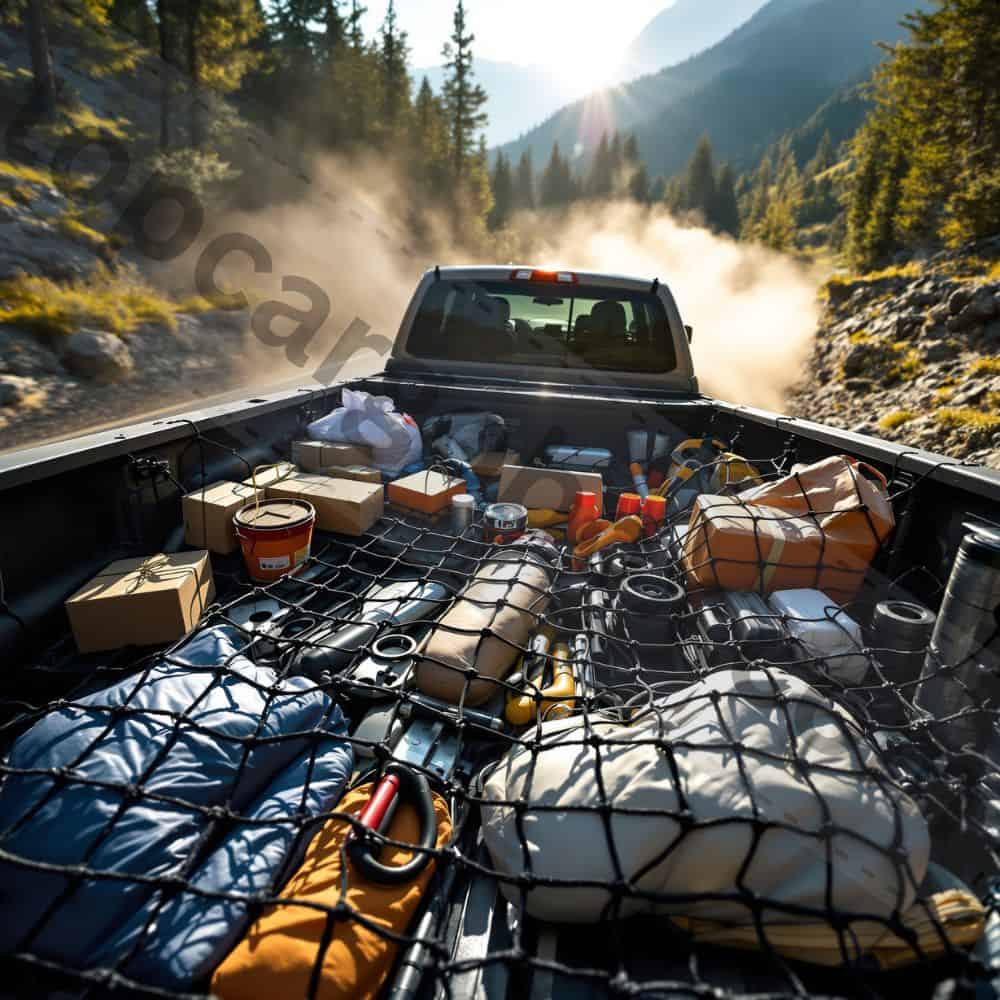
Each of these nets fills a specific niche, and understanding that niche is the key to your satisfaction. Trying to use a light-duty net for a heavy-duty job is a recipe for frustration and potential disaster. Likewise, using a massive, heavy-duty net for a few pool toys is just overkill and can be more cumbersome than it’s worth. Take a honest look at what you most often carry. Listen to your own frustrations. What sucks about your current setup? Let that guide you. Whichever you choose, you’re taking a step towards safer, easier, and more secure hauling. And that’s a win, no matter what.
Essential Gear for a Secure Haul
Before we get into the technique of actually tying things down, let’s make sure your truck is equipped for the job. You can’t secure a load if you have nothing to secure it to. Using a cargo net is awesome, but it’s only one part of the system. Your truck bed almost certainly has built-in tie-down points. These are usually sturdy metal loops or cleats in the corners or along the sides of the bed. Take a second to locate them and give them a quick tug to make sure they’re solid. If your truck is a bit old school and doesn’t have great points, or if you need more flexibility, you might want to invest in a set of aftermarket tie-down anchors that you can install. These give you more options for where to attach your net or straps, which is a huge help when dealing with irregular shapes.
Beyond the net itself, your toolkit should include a few other heroes. Ratchet straps or cam buckle straps are fantastic for securing individual large items. A moving blanket or two is an absolute must-have. Throwing a blanket over your cargo before you put the net on does two amazing things: it protects the surfaces of your items from getting scratched by the net or by rubbing against each other, and it adds friction, which helps prevent smaller things from sliding around. For super long items like pipes or lumber, you should definitely check out a bed extender, which is a lifesaver for preventing the dreaded “tailgate-down and red-flag” situation. And if you’re hauling a ton of smaller, loose items, using storage bins or even the best cargo boxes can help you corral the chaos before you even start securing it. Having the right gear on hand is half the battle won, no worries.
A Step-by-Step Guide to Mastering Your Load
Alright, let’s get our hands dirty. You’ve got your gear, you’ve got your weirdly shaped load, and you’re ready to get it locked down. How’s it going over there? Ready to become a pro? First things first, you need to load the truck bed strategically. This is where most people go wrong right out of the gate. Heavier, larger, and more stable items should always go in first, placed against the cab wall of the truck bed. This creates a solid backstop. Then, build your load forward from there, placing lighter and more awkward items on top and toward the tailgate. Try to fill in gaps as much as possible. If you have a rolled-up rug, can you slide those long 2x4s through the center of it? If you have bags of soil, can they be used to stabilize the base of a piece of furniture? Get creative and make the load as compact and interlocked as possible.
Once your load is positioned, it’s time for the protection layer. Drape one or two moving blankets over the entire pile. This is a simple step that pays off big time, protecting your items and adding that crucial friction. Now, break out your cargo net. Unfold it and drape it evenly over the entire load. Start by hooking the carabiners onto the tie-down points that are closest to the cab of the truck. Then, move to the opposite side and hook those in. This centers the net. Finally, attach the remaining carabiners, working your way around the truck bed. The elastic will be doing its job, so you’ll need to stretch it to reach the points. The goal is a tight, secure fit that presses down evenly across the load. You shouldn’t have huge, sagging pockets in the net, but you also don’t need to stretch it to its absolute tearing point. Just a good, firm, “that’s not going anywhere” kind of tension.
Now, do the final check. This is non-negotiable. Give the net a few good tugs from different points. Walk around the truck and look for any items that might be threatening to poke out from underneath. Give the whole truck a gentle rock and see if anything major shifts. If something moves, you might need to reposition the net or add a dedicated strap for that one unruly item. Remember, the cargo net is amazing for containing a multi-item load, but sometimes one particularly long or heavy piece needs its own dedicated ratchet strap for extra insurance. It’s always better to be over-prepared than to be that person on the side of the road chasing down their belongings. Feeling confident? You should be. That load is looking secure.
What About Other Cargo Solutions?
So, where does a cargo net fit in with all the other options out there? That’s a fair question. Let’s chat about it. A cargo net isn’t always the single solution for every job, but it’s an incredibly versatile tool that often works in tandem with other products. For example, if you’re hauling a bunch of boxes filled with household goods, using the net to secure them is perfect. But if you’re dealing with a single, massive, and incredibly valuable item, you might be looking at one of the biggest cargo boxes for ultimate protection from the elements. A cargo net is about containment and securing against movement, while a hard-shell cargo box is about total enclosure and security.
Similarly, sometimes you need a super low-profile solution. Maybe you need to park in a garage with a low clearance height, or you just don’t want a big box ruining the lines of your truck. In that case, checking out the skinny, thinnest, low-profile cargo boxes could be a great alternative for certain types of gear, while a net would be better for bulky, odd-shaped items that wouldn’t fit in a box. And hey, maybe you have a specific aesthetic you’re going for. Who knew you could get a white cargo box to match your vehicle? It’s a thing! The point is, knowing your options lets you build the perfect hauling toolkit for your specific needs. A cargo net, some straps, a few moving blankets, and maybe a dedicated box for certain trips—that’s how you cover all your bases.
Key Features of a Top-Tier Cargo Net
Let’s get specific about what you should look for when you’re picking out a cargo net. Not all nets are created equal, and you don’t want a cheap one failing on you when you need it most. We’ll use the AUTOWN net as our reference point for what makes a net legit.
Feature | Specification and Benefit |
|---|---|
Size & Elasticity | Starts at 4’x4′ and stretches to 7’x7′. This massive range offers incredible versatility for both small and large, overflowing loads. |
Mesh Material | Made from high-strength nylon. This material is tough, resistant to UV rays from the sun, and can handle exposure to the elements without degrading quickly. |
Mesh Opening Size | A fine 1″x1″ grid. This is crucial because it prevents smaller items from poking through the holes, which is a common failure point with wider-mesh nets. |
Hardware | Features 8 metal carabiners (D-clips). These are climbing-style buckles that are far more secure and reliable than simple S-hooks or plastic clips, providing a positive lock. |
Vehicle Compatibility | Designed for ATVs, SUVs, and Trucks. The design is universal enough to work on virtually any vehicle with standard tie-down points, including trailers and boats. |
Primary Function | Provides strong, elasticized downward pressure. It works by containing and immobilizing a multi-item load, transforming many pieces into one secure unit. |
The combination of these features is what makes this kind of net so effective. The elasticity means it’s forgiving and easy to use, while the fine mesh and strong carabiners ensure it’s not just convenient, but also seriously strong. It’s a piece of gear that is simple on the surface but brilliantly engineered to solve a real-world problem that you face all the time.
Are You Making These Common Mistakes?
Dude, we all make mistakes. It’s what it is. But when it comes to securing a load, some mistakes can have pretty serious consequences. Let’s go over a few common ones so you can avoid them. First up is the “I don’t need to check it” mistake. You secure your load in the driveway, it looks good, and you head out. But after driving a few miles, especially on a bumpy road, things settle and compress. That tight net can become loose. It’s a great habit to pull over after the first five or ten minutes of your trip and just do a quick re-tightening check. It takes 30 seconds and can save you a world of trouble.
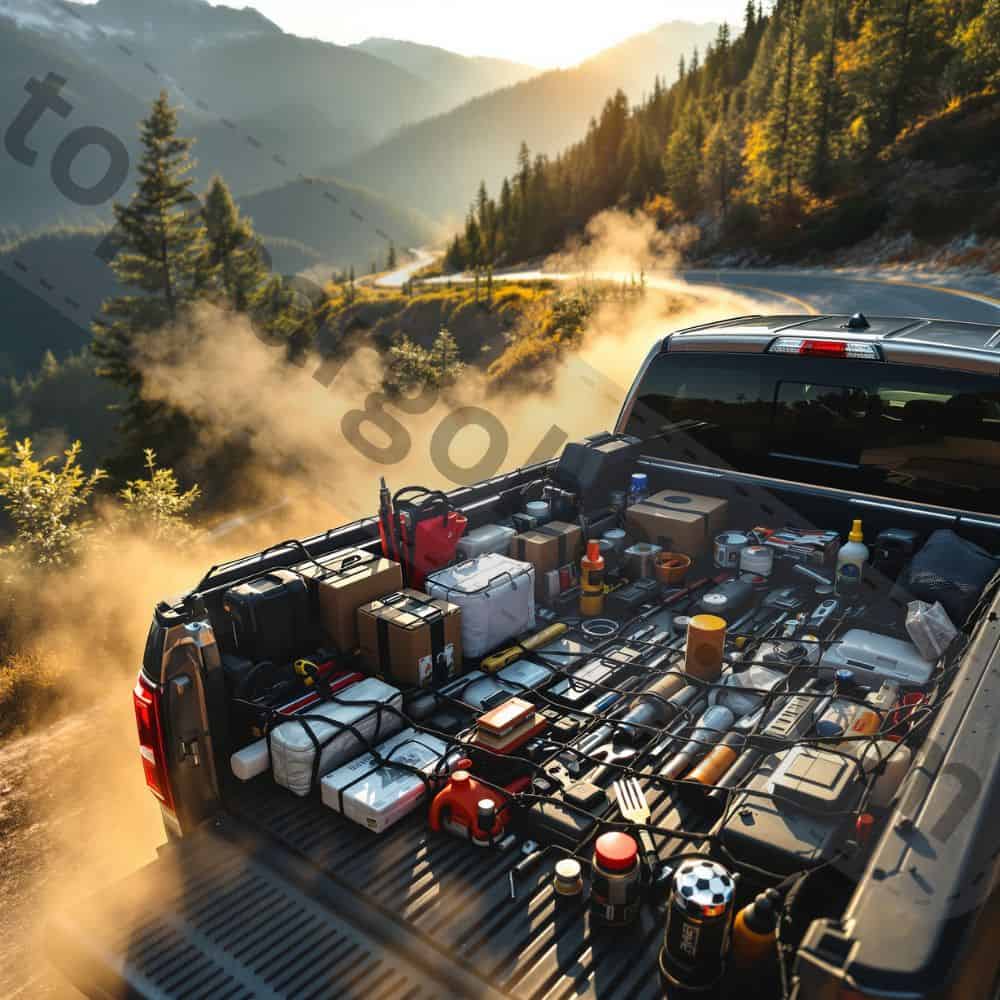
Another classic error is over-stretching the net. I get it, you want it tight. But if you stretch a cargo net to 100 percent of its capacity, you’re putting immense strain on the elastic strands and the seams. Over time, this will weaken the net and lead to a failure. You want a firm, secure stretch, not a panicked, “I-think-it’s-about-to-snap” stretch. Conversely, under-tightening is just as bad. A loose net is basically just a decorative cover; it’s not providing any real securing force. The load can still shift and bounce underneath it. The goal is that Goldilocks zone: just right. And finally, forgetting to protect your cargo is a bummer. That fine mesh is strong, but if you’re hauling something with a sharp metal edge, it could potentially snag or tear the nylon. Using a moving blanket as a buffer is a chill and easy way to prevent any damage to both your net and your stuff.
Final Thoughts: Drive with Confidence
So, there you have it. Securing irregularly shaped items in your truck bed doesn’t have to be a source of stress or a game of chance. By understanding the forces at play, investing in a versatile and sturdy cargo net, and following a logical loading and securing process, you can totally conquer the chaos. It’s all about being prepared and using the right tool for the job. That feeling of pulling into your destination, looking back at your truck bed, and seeing everything exactly where you put it? That’s awesome. It’s a small victory, but it feels great.
Remember, a little bit of time and effort spent on securing your load properly is not just about protecting your property; it’s about being a responsible and safe driver. Everyone on the road will appreciate it, and you’ll have total peace of mind. So next time you’re faced with that truck bed jigsaw puzzle, don’t sweat it. You’ve got this. Grab your net, your straps, and your blankets, and get to work.
Our team is creating outdoor-gear relevant articles with passion. If our articles can help you to find the correct solutions for your questions, we will be happy about that. In the content creation process, we usually collect accurate and useful information online or offline to compile our content in an organized way. Consequently, we can guarantee that you can discover some expected answers to your questions. We appreciate your time on our site.

